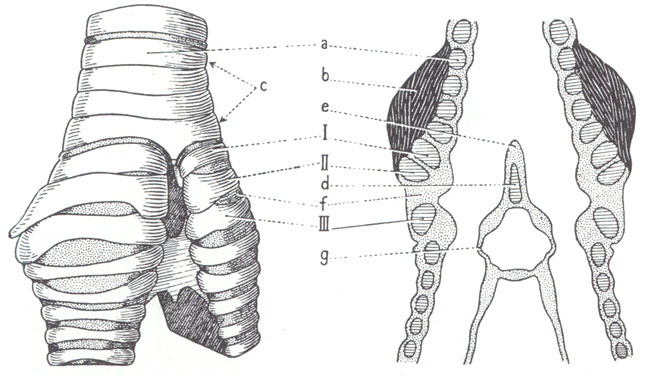SYRINX OF A PASSERINE SONGBIRD
Olin Sewall Pettingall, Jr., A Laboratory and Field Manual of Ornithology (3rd Edition), Minneapolis, 1956
Contributed by Jim Fisher

__
At the left, the syrinx viewed externally; at the right, the syrinx with the ventral side removed. a, tracheal ring; b, muscles of the syrinx; c, tympanum; d, pessulus; e, semilunar membrane; f, external tympaniform membrane; g, internal tympaniform membrane; I, II, III, first bronchial rings.
Voice is produced in the bird when exhaled air makes the tympaniform membranes vibrate, causing sound waves. Variation in pitch is obtained through change in the tension of the tympaniform membranes, which is regulated primarily by the sternotracheal muscles and secondarily by the bronchiotracheal muscles on the outer walls of the syrinx. The larynx and other dilations of the trachea assist in modulating the voice.
![[TOC]](45_toc_t_off.gif)